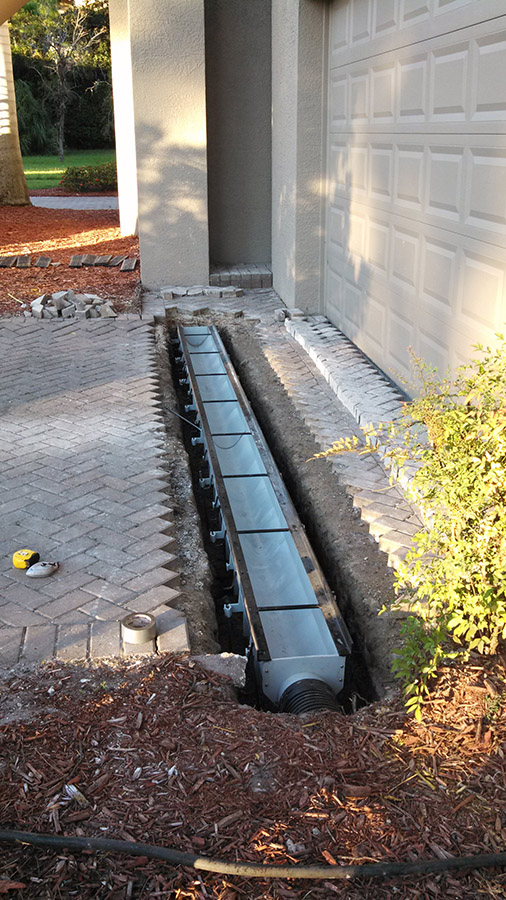The Importance of Effective Home Drainage Systems
The importance of good drainage systems is something that we do not think of very often, but can be of tremendous importance in maintaining the integrity of one’s property. Long-term exposure to moisture can lead to a host of problems for many structures, especially those made of wood, sheetrock, and similar materials. From weakening the building materials to leading to bacterial and fungal growth, there are a number of safety and health problems that can arise from the lack of proper drainage systems. One of the bigger issues can be if water starts to pool around your house’s foundation and then starts to seep through, causing a big potential mess.
When it comes to houses gutters are a very important part of having a good drainage system. They are designed to catch water and funnel it away from the foundation. It is important to maintain them and to make sure that water is not spilling over the sides of the house consistently when it rains. Gutters should have a slope downward of 1 inch for every two feet of length to ensure downward movement of the water. It is important to make sure that the gutters are attached with something strong like screws and that if they are sectional pieces which are connected, that no water makes its way through the joints (there are a number of water seal solutions that could be utilized to fill up any cracks).
A downspout diverter should then carry the water from the edges of the gutters to the ground and then away from the house into a driveway or away from the house. Floor plates (splashguards) can help guide the water away from the edge of the house too. Bigger downspout diverters are preferred so that they can handle high water volume (especially in areas with heavy rain) and to reduce the likelihood of blockage by foreign materials. Conducting regular gutter cleanings can also help keep the system clean and the water flowing where it should.
The last major part of the drainage system to look at is where the water goes once it is on ground level. It is of little use to have the water just sit next to the house. Splashguards and flexible plastic piping can help get the water away from the house- at least five feet away is recommended. If possible it is also good to ensure that the water has a downward slope once it comes out of the diverters so that the water naturally goes as far away from the edifice as possible. Once you have a system set up, it is important to monitor it during the next rainfall so you can assess where the water is going and importantly, where it is getting “stuck” especially in proximity to the house. Any areas where water is building up can be filled with soil, grass, gravel, etc. Some areas may require something a bit more complex but still doable such as French drains. The initial investment is likely not going to be too great and certainly much less than if you let the water build over time and get foundational damage later on.

